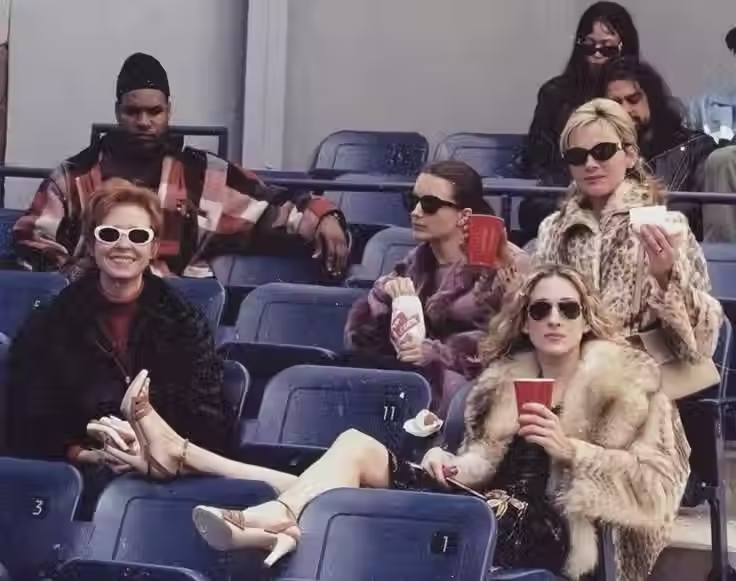Artisanal Fashion is Trending And It’s More Than Just Aesthetic
- Juliette Murer
- May 7
- 3 min read
Fashion in 2025 isn’t just about what you wear, it’s about what it means. The past few years have been a full-scale rejection of mass-produced sameness in favor of something real, personal, and intentional. The fast fashion free-for-all has hit a breaking point. People aren’t just tired of seeing the same Shein dress on 500 influencers; they’re embarrassed to wear something that screams “algorithm-approved.” Now, it’s about owning pieces that actually hold weight, whether through craftsmanship, nostalgia, or a sense of self.
It makes sense when you think about how exhausting the past decade has been. We were thrown into microtrend chaos, one month it’s coconut girl, next it’s balletcore, then it’s indie sleaze 2.0. Fashion became an endless scroll, a TikTok trend cycle so fast that trends barely had time to exist before they were dead. And now? People are over it. Wearing something mass-produced feels… cheap. Not in price, but in identity. It’s almost like carrying a fake designer bag, sure, it looks good at first, but it doesn’t mean anything.

The New Luxury: Customization and Craft
That’s why customization and one-of-a-kind pieces are the new flex. It’s not just about buying a brand name anymore, it’s about having something no one else has. Golden Goose’s whole thing is making sneakers look already lived-in, while Minime Paris repurposes deadstock Chanel fabrics into handbags that feel like heirlooms. This is fashion that feels less like a purchase and more like a personal artifact.
And it’s not just about the clothes, it’s about the experience around them. The unboxing, the presentation, the way they’re delivered to you. That’s why brands like Doublet are making T-shirts look like they’re vacuum-sealed meat at Dover Street Market, it’s part of the storytelling. Unboxing culture made packaging almost as important as the product itself. We want to feel like we’re unwrapping something rare, special, worth savoring.

Sustainability, But Make It Loud
Sustainability is in the mix too, but not in the beige, linen, and “ethical basics” way that defined the early 2010s. It’s gone full maximalist, borderline chaotic, think Ashley Williams making dresses out of literal trash. The new take on sustainability is loud and experimental. Brands aren’t hiding the “flaws” of upcycling; they’re leaning into them. Raw edges, exposed seams, patchwork, it’s less about pretending something is new and more about embracing its history.
And this shift isn’t just aesthetic, it’s economic. The luxury sector has spent years arguing that artisans, with their specialized skills and generational knowledge, are the ultimate counter to fast fashion’s disposability. As Roger Tredreis (2025) puts it, “If we make luxury goods with passion and emotion, and wear them similarly, darning clothes when they develop holes, refurbishing shoes and bags when they fray, then we appreciate them more and shop less.” That mindset is exactly why major houses like Bottega Veneta are doubling down on heritage craftsmanship with projects like Bottega for Bottegas, putting the spotlight on traditional Italian artisans rather than just pushing another seasonal campaign.
Shopping as an Experience
Even the way we shop is changing. People don’t want to passively browse anymore; they want to be part of the process. Fashion is an event again, a scene. Brands are hosting immersive pop-ups, workshops, and collaborations that make you feel like you’re stepping into their world. Dr. Martens’ Buddy Buddy Paris event, where fashion and food were combined into a full sensory experience, is a perfect example. Or Bottega for Bottegas, where the brand literally removed itself from the spotlight to showcase smaller, independent craftspeople.
The brands that are winning right now aren’t just selling products, they’re inviting people into something bigger.

What’s Next?
The challenge for designers now is keeping this energy alive while scaling their businesses without losing the exclusivity that makes artisanal fashion so appealing. Some brands are looking to bioengineered sustainable fabrics as a way to merge innovation with craftsmanship, a mix of the old and the futuristic. Others are doubling down on traditional techniques, proving that handmade, personal, and imperfect is what people actually want.
Fashion in 2025 is proving one thing: people want clothes that feel like part of their story, not just something to throw away after a season. The era of “just buying stuff” is fading fast. Now, building a wardrobe of meaningful pieces is the new luxury.



Comments